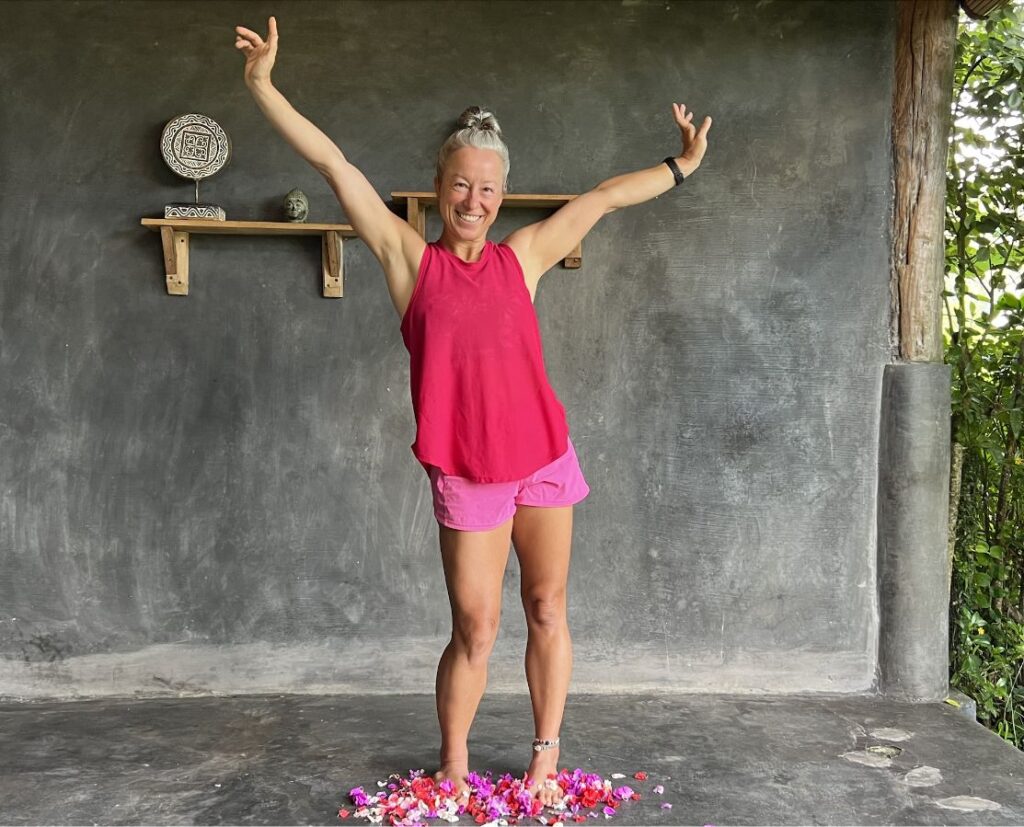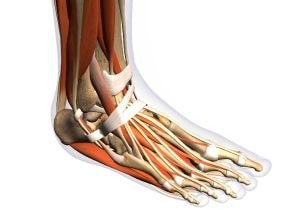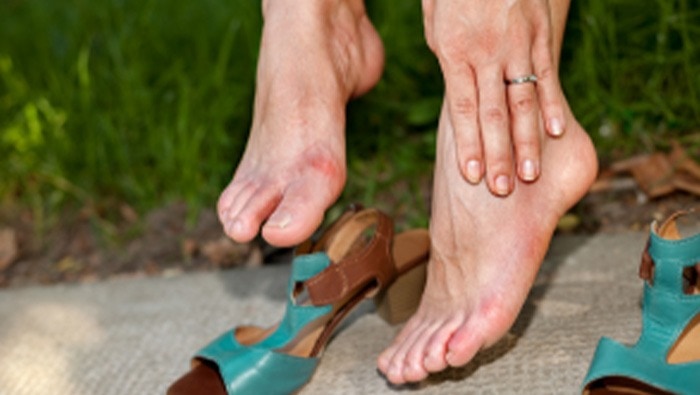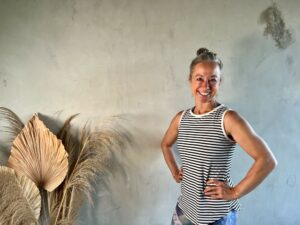We put our feet through a lot, don’t we? We stuff them into shoes that are too tight, walk on un-foot-friendly surfaces every day, and barely give them a second thought until we’re rudely interrupted by a blister or bunion. But our feet are the unsung heroes of our bodies, always ready to carry us on our next adventure. The truth is, taking care of our feet is essential for our overall health and mobility, and neglecting them can lead to discomfort and pain elsewhere in the body.
So it’s time to kick off your shoes (or at least change into a more foot-friendly pair) and show your feet some love! In this article, we’re going to look at why working on your feet should be the first step in your movement journey.

Want Less Pain, Better Mobility And Stronger All-Around Movement? Start With Your Feet.
I usually recommend that my clients start their movement journey by giving their feet a little TLC. Your main concern might be back pain, sneeze pee or tight shoulders – but chances are you’ll still benefit from happier feet. Why? Our feet connect us to the ground, so they have a big impact on our bodies as we move. A problem in our feet can show up just about anywhere else in the body. Imagine a domino effect from your feet to your ankles, knees, hips, pelvic floor, low back, upper back, neck and, yes, those tight shoulders.
With 28 bones, 33 joints and 112 ligaments, our feet are pretty complex structures. They need to be sturdy enough to bear our weight, and flexible enough to adapt uneven surfaces. They help us maintain balance and absorb shocks if we jump or trip. A healthy foot twists (supinates) and untwists (pronates) as we walk (check out this video for a breakdown). This movement is transferred through our bodies, affecting multiple other joints on its way up.

So it’s no surprise that foot function has a big impact on many chronic pain issues north of our feet.
Feet are also a logical place to start because we often ignore them. We put in the time to work our core and other big muscles, but somehow just expect our feet to work. Even if we move and exercise often, wearing the wrong shoes actually immobilises the tissues in our feet. This means our feet are typically the weakest and most neglected parts of our bodies, so big wins should come fast.
TL;DR? If we don’t restore foot function first, we’re sabotaging our other efforts to move well (and making our feet unhappy too!)
Why Is Foot Pain So Common?
Modern feet are often sad and sore because conventional shoes box in our feet and prevent normal foot mechanics. For example:
👣 Narrow toe boxes in most conventional shoes squish our toes, squashing our bones so our feet grow in the wrong shape. Pointy pumps are the most obvious, but even your fave Adidas sneaks are usually far too narrow through the toes. This contributes to bunions, neuromas and low circulation because there isn’t enough space.
👣 Stiff, inflexible soles make it hard for our feet to flex, so they become stiff and weak. The more supportive the shoe, the weaker our feet become.
👣 Raised heels force us to carry our weight too far forward, ramping up the pressure on the balls of our feet, leading to plantar fasciitis, flat feet, metatarsalgia and neuromas. This also contributes to low back compression and pelvic floor issues – like I said, foot problems never stay at the feet!
👣 Lifted toes (toe-spring, like at the front of a running shoe) overstretch the soles of our feet and shorten the top. Hammertoes, flat feet and plantar fasciitis may be an unwelcome result.
On top of that, years of sitting in chairs creates poor walking patterns that overload our feet. We don’t walk often enough, and when we do, it’s usually on hard pavements. Our feet miss out on the healthy, varied movement they love and need.

Your Feet Connect To Everything In Your Body!
Working on your feet isn’t just about foot pain, either. The way we walk has a HUGE impact on the rest of our bodies – and our feet play a major role in how we walk!
For example: When our big toes don’t bend enough (tech term: extend), our legs can’t reach behind us when we walk. That means our pelvic floors don’t get enough exercise & our glutes miss out on their full range of motion. And we create weird compensations to make up for the lack of hip extension. So we kind of throw ourselves forward at every step – which can have a huge impact on our spine, necks & shoulders. Or we twist or over extend our low backs (helloooooo low back pain & SI joint stuff). Or our knees take it on instead. Ouch.
Another big toe-related issue? Like I said above, a squashed-in big toe can’t help you pronate & supinate. When you miss out on these twisting movements of your feet, you also miss out on rotational movements at your hips. And since some of your hip rotator muscles are actually pelvic floor muscles, it means your big toes are literally having a major impact on your pelvic floor. Crazy but true! (Learn more about how whole body movement affects your pelvic floor right here).
And of course, there’s balance. Walking is 80% a one legged activity – you’re just transferring weight from one leg to the other again and again. Conventional shoes make it hard for our feet to feel the ground and narrow our base of support – so over time, our balance can really decline. And falling is no joke, especially as we get older! (Want a bit more help with your balance? Try this video).
That’s just a few examples – because our feet literally affect everything above them. The way I see it, working on our feet is a super high value opportunity – for most of us, they’re the weakest parts of our bodies – and they have the biggest upstream impact. There’s so much to gain!!
Can You Heal Your Feet?
The good news is that foot pain (or simply limited foot function) doesn’t need to be permanent. It can take time to see progress, but it’s absolutely possible for most of us to improve or resolve foot pain completely and restore our feet and our walking technique – if we make the right changes and stick to them.
Let’s look at a couple of examples:
👣 Plantar fasciitis (or fasciosis) – this basically happens when weak muscles force connective tissues to do all the work, bearing more weight than they can handle. It often shows up as pain around the heel. Solution? You’ll need to strengthen the tissues or decrease the load (or both). In this video I share 10 tips to heal plantar fasciitis naturally, so put your detective hat on and find the one that works for you.
👣 Bunions – these happen when the big toe joint gets enlarged and moves outwards, causing the toe to bend inwards towards the other toes. These can be super painful and trigger other foot and whole-body issues. Fun fact: the proper name for the big toe is hallux, which comes from the Greek word meaning “to spring or leap”. And that’s exactly what it does. The big toe is one of the hardest working parts of the body, propelling us forward and pushing off when we walk. Bunions block this movement, creating a weak foot arch. You can prevent and reduce bunion pain and progression, but you won’t be able address any actual changes to the bone. Movement is magic, but it can’t work miracles!
So if you’re thinking, “Ok, Petra, but I have flat feet” or “I have my Mom’s high arches and there’s nothing I can do,” I encourage you to think again. With gentle, consistent movement (and the right shoes) you can rebuild your arches, mobilize your feet and start to restore health to your tissues. While of course there are some issues that cannot be resolved, like osteoarthritis and advanced bunions, working on your feet can still reduce pain and improve how your feet & the rest of your body feels.
Build strong, healthy, pain-free feet - for a lifetime! (for free!)
Foot Fixes To Avoid
Conventional foot pain remedies usually take you down the route of supportive shoes, orthotics or even surgery. Short term, support can be helpful. But in the long run, they can actually make the problem worse. Orthotics can make your feet even weaker, causing trouble to spread to other parts of the body. Even supportive shoes do the opposite of what we need, by limiting foot function and even causing trips and falls (especially in older people) because they make it hard to feel the ground.
And although sometimes surgery is a necessary option, it’s best saved as a last resort. It can be painful, and it doesn’t typically change the root cause of the problem, which is how we’re moving our feet. Starting with foot exercises to restore function can often help you avoid surgery altogether, and help you get better results if you do decide to go the surgical route.
(Pod rec: this podcast interview with Peter Attia MD and Irene Davis PhD has some great insights into the issues with orthotics)
So, I recommend two solutions: changing to foot-friendly, minimal shoes, and doing foot exercises to restore strength and function.
Transitioning To Minimal Shoes
Barefoot or minimalist shoes are about letting our feet get back to nature. Instead of squashing them into high-heeled, narrow-toed prisons, these shoes let our feet move.
Thinking of buying some barefoot-style shoes? Here are a few features you’ll want to look out for:
👣 Totally flat, with no toe spring or heel lift
👣 Flexible, slim soles, so your feet know what’s going underfoot and can move through their natural movement patterns
👣 Wide toe box, so your toes can spread out
👣 Attach fully to your feet, so your toes aren’t gripping on for dear life
Or just go barefoot!
A word of warning though: if you’re used to those high-heeled, narrow-toed shoes, your feet might get quite a shock if you suddenly switch to barefoot-style shoes. Transitioning too quickly is very common and can overwhelm your poor feet. You’ll need to do a bit of prep to transition safely – think transitional shoes with a little more cushion (also great if you do a lot of city walking), doing lots of foot exercises to build strength, and paying attention to any pain signals in your feet. And take it from me, always carry a comfy pair of back-up shoes until your feet are used to minimalist footwear!
Check out my Step By Step Guide To Safely Switching To Minimal Shoes >>

Free Your Feet By Restoring Strength & Function
Changing to foot-friendly shoes is awesome, but it’s only step one. Switching shoes will strengthen your feet, but won’t necessarily help restore optimal foot & walking mechanics. Restoring full function and mobility can take a liiiiittle bit more time and effort.
But I’ve got your back (and feet, and hips, and knees, and pelvic floor, and shoulders, and… you get the idea). My free Free Your Feet program has everything you need to get started on building strong, flexible, happy feet. We get huge wins when we work on our feet because our whole body benefits. So let’s focus on getting this part right, and the rest of your body will thank you.
Pick up the Free Your Feet freebie to end foot pain naturally – and nurture everything upstream. In just 7 days, you’ll be on track to happy feet and whole-body health.







